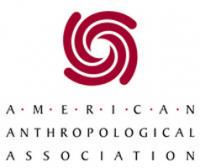On an extremely cold November morning in Chicago, nine stalwart individuals braved the weather to attend a Saturday breakfast hosted by IPinCH, at the Eleven City Diner. Everyone was in town for the annual meeting of the American Anthropological Association, and this was a great opportunity for us to get caught up on each other’s personal and professional news.
 These informal gatherings are beginning to feel a bit like a family reunion – though some were only meeting face-to-face for the first time. Around the table were myself, Michael Brown, Davina Two Bears, Holly Cusack-McVeigh, Dru McGill, Karen and Larry Zimmerman, Lena Mortensen, and Rachel Giraudo. The piles of food were enough to last all day. I only wish all IPinCHers who were in Chicago had been able to join us!
These informal gatherings are beginning to feel a bit like a family reunion – though some were only meeting face-to-face for the first time. Around the table were myself, Michael Brown, Davina Two Bears, Holly Cusack-McVeigh, Dru McGill, Karen and Larry Zimmerman, Lena Mortensen, and Rachel Giraudo. The piles of food were enough to last all day. I only wish all IPinCHers who were in Chicago had been able to join us!
I had arrived at the AAA meetings on Thursday, and unfortunately missed the session on “co-curated exhibitions” where Kate Hennessy was presenting, though I heard through the grapevine that it was excellent.
I attended the second half of the Thursday afternoon session organized by Uzma Rizvi and Jane Anderson titled 'Once you see it, you can't un-see it' (A. Roy): Negotiating Inequality and Coloniality in Anthropological Epistemology and Archaeological Practice. Nearly all of the papers in this session were about community-based research in history and archaeology. Uzma pointed out how significant it was that this subject was being addressed in an invited session and taking place in the Grand Ballroom. Amy Lonetree read Sonya Atalay’s paper on the topic of NAGPRA and “unidentified” human remains. The session was well-attended, and there were a number of IPinCH people in the audience, including Randy McGuire.
On Thursday afternoon, I presented George Nicholas’s paper at a session organized by Ian Kuijt and some of his students, called One Step Further: Community Archaeology, Descendant Communities and the Public. Sonya Atalay’s discussant paper, read by one of the student organizers, was excellent. George’s paper was the only one to look beyond a single case study at broader issues. It was too bad that the organizers didn’t make time for questions or discussion. A few students attending expressed interest in IPinCH. Larry Zimmerman and Holly Cusack-McVeigh were also there - Holly had been hoping to meet George, who was absentee (having just returned from Japan).
I then went to the session on Touring Publics, Global Interconnections, and Interdisciplinary Engagements: Whither the Anthropology of Tourism? organized by Quetzil Castaneda, where I heard Lena Mortensen’s paper on “Branding Value in the Anthropology of Tourism.” Lena’s paper was excellent and several people came specifically to hear her. The session ran late, which meant that my plans to make it to the session on the politics of UNESCO World Heritage, which included a presentation by Rachel Giraudo and Rosemary Coombe as discussant, didn’t work out.
Instead I slipped into a session organized by Ventura Perez (UMass-Amherst) on community-based research and anthropology beyond the academy. I was literally stuck in a standing-room only crowd once everyone flooded in to hear the discussants, Laura Nader and Nancy Scheper-Hughes. Laura Nader nailed some important points on how anthropology could contribute to the world in ways that make a difference.
On Friday afternoon I spent some time at the Left Coast Press booth, talking with the representative there about IPinCH publication plans. Then, I attended a poster session titled Engagements with Past, Present, and Future Through Cultural Heritage. I spoke with two poster presenters in depth, and gave each of them information about IPinCH. One was Erica Kowsz, a masters’ student of Sonya Atalay’s at UMass Amherst. Her interesting poster, “Whose Heritage Practice? A Case Study in Interior British Columbia,” compared two archaeological sites, one under the control of the local First Nation and the other being interpreted as a public archaeology site. The other was by Wonkyoung Choi (Memorial University) on “Reclaiming Ainu Heritage: From ‘Former Aborigines’ to ‘Indigenous People.’” It would be great if we could ask these students to share their posters on the IPinCH website.
I ran into Larry Zimmerman at the poster session. He was spreading the word about IPinCH to interested people. Larry and I discussed how we often talk to people who have heard something about IPinCH, but don’t know exactly what it is, or how they can find out more.
On Saturday around noon, Lena and I had a few words in passing with Melissa Baird in the halls (if you’ve been to AAAs, you know what I mean!). Next, I attended the board meeting of the Central States Anthropological Society before heading back home to Indiana, making it across the state line before dark fell and the lake-effect snow started falling.
Based on my close reading of session and presentation titles in this year’s program, it was obvious that the topic of “community-based research” (CBR) has entered a new phase of popularity (I’ve been tracking this at AAAs for several years, as it’s been an interest of mine since 1993). Last year at the AAAs in San Francisco, where I organized a panel on CBR, there were only a handful of sessions; this year there were about three times as many.
While this is wonderful, it also highlights that a wide range of methodologies and research frameworks are coming under the heading of CBR. Presentations in some of the CBR sessions were more in-line with what I would call “public” archaeology or anthropology; they were about projects that did indeed find ways to involve their publics in more aspects of the project. Often this meant working with local experts and knowledge bearers in new and expanded ways. For others it involved additional public outreach events, or establishing and maintaining community blogs.
I feel that IPinCH has much to offer because the projects and methodologies it supports have engaged with this topic on multiple levels (institutional, trans-national, community-directed…) and, in many cases, to a degree that others are just beginning to imagine.
The American Anthropological Association's Annual Meeting (“Future Publics, Current Engagements”) was held in Chicago, November 20-24, 2013.
(Photo: Eleven City Diner, source)






